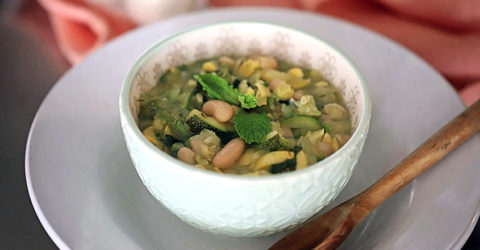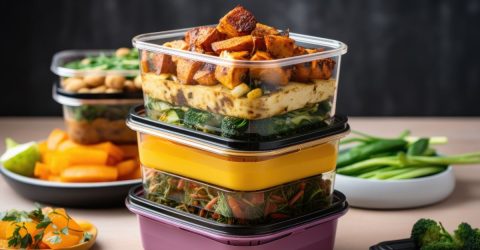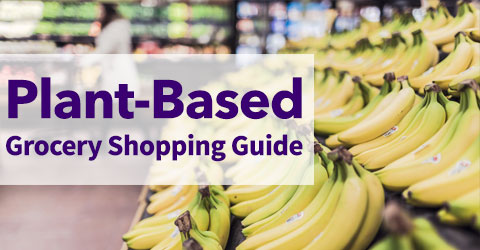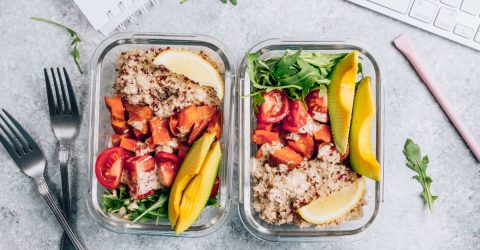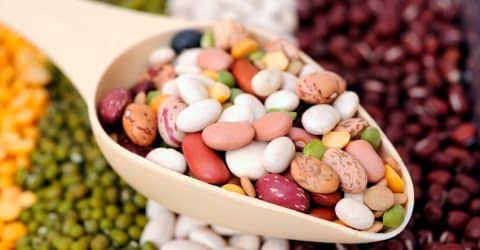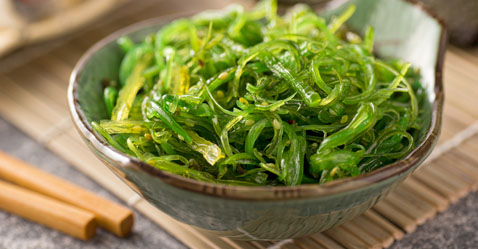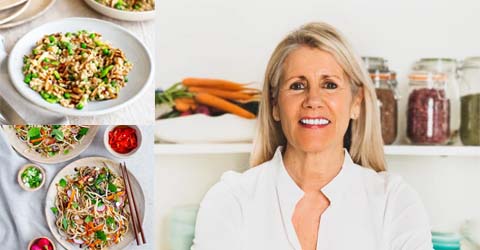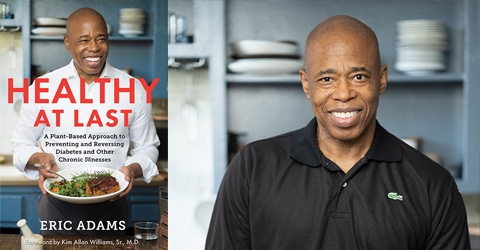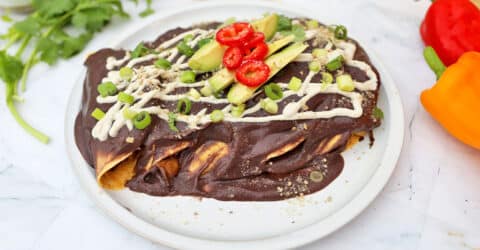Search Results for beans
Easy Plant-Based Meal Prep for Breakfast, Lunch, and Dinner
…with one or more complex carbohydrates: whole grains (ex: rice, quinoa, couscous) starchy vegetables (ex: potatoes, corn, squash) legumes (ex: chickpeas, beans, lentils) Step 2. Add non-starchy vegetables and/or fruits,…
Plant-Based Grocery Shopping Guide
…fruits and vegetables! Choose plenty of dark leafy greens. Beans and Legumes Enjoy ALL varieties of dried beans and lentils. If you buy canned beans, look for low-sodium or no-salt….
Batch Cooking and Meal Prep Tips for a Plant-Based Kitchen
…grains a few times a week and freeze them for later use. This way, you always have them available for recipes. h. A large batch of beans – Dried beans…
What Are Lectins? A Look at This Controversial Protein
…lectins in beans and lentils Cucurbitaceae (kyüˌkərbəˈtāsēˌē) lectins in the juice of cucumbers, melons, and squashes Prolamins in grains Agglutinin and hemagglutinin, primarily in beans and grains Lectins are also…
Iodine on a Plant-Based Diet: Why Is it Important & How to Get Enough
…meet the RDA: Add a strip of kombu seaweed (also known as kelp) to the water when cooking dried beans Purchase canned beans prepared with kombu, such as Eden brand[12]…
It’s Not Difficult to Be Vegan – Making the Change and Rethinking Protein
…are many foods in the plant kingdom that are especially rich in protein. All the legume family – anything that grows in a pod, lentils, beans and chickpeas – and…
How I Reversed My Diabetes and Became Healthy at Last
…me why meat, fish, eggs, dairy, and cooking oils had been slowly killing me for years, and how fruits, vegetables, whole grains, beans, nuts, seeds, and other whole-plant foods could…
16 Healthy Plant-Based Cinco de Mayo Recipes
…bring that magic home with these oil-free fajitas that are full of flavor. Ensalada Azteca Made with brown rice, black beans, and mangoes, this vibrant dish from The China Study…
Deepen Your Knowledge With Our
Plant-Based Nutrition
Certificate
Plant-Based Nutrition Certificate
- 23,000+ students
- 100% online, learn at your own pace
- No prerequisites
- Continuing education credits
